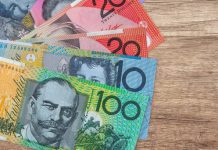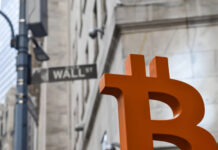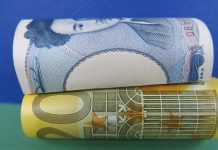Markets
It was a waiting game for a series of US April data to be released today. They didn’t disappoint, in every sense of the word. Numbers were better or higher than expected across the board, starting with durable goods orders. The headline figure rose a monthly 1.1% compared to a 1% decline penciled in by analysts. Shipments, often seen as a proxy for capital investment in GDP calculations, rose 0.5% vs 0.1% expected. Personal income rose 0.4% m/m, matching expectations but spending (0.8% m/m), including the gauge correcting for inflation (0.5% m/m), easily leaped above the bar. Turning to the main dish, PCE deflators. Headline April PCE accelerated on a 0.4% m/m pace to 4.4% y/y. Core PCE inflation also rose a monthly 0.4% to be up 4.7% compared to the same month last year. The latter since the start of the year fluctuated between 4.6% and 4.7%, suggesting a lot of price stickiness and a very wobbly, drawn-out disinflationary process. All readings, both monthly and yearly, core and headline, topped expectations by a tenth of a percent. Marginal, but telling. Core bond yields in one swipe higher erased all previous losses to the tune of 4 bps to trade a few bps in the green again. The short end of the curve again underperforms as markets now more than fully priced in a 25 bps July rate hike. The 2-y yield briefly topped the 4.60% on a >7 bps gain before paring gains to about 4 bps at the time of writing. Another nice gain as they go into a long weekend (Memorial Day on Monday). German yields were caught in the slipstream higher, wiping out declines to trade >1 bp higher. UK gilt yields take a breather going into a long weekend after an outright impressive surge up to 40 bps over the past few days. The front end sheds 4.6 bps though the very long end (30-y) still adds 1.6 bps. Retail sales in April were stronger than expected, with 0.5% m/m for the headline figure and 0.8% in the core reading (excluding auto fuel). But since they follow up on a downwardly revised March print, the net surprise is negligible.
The Swedish krone stands out on currency markets (see headline below). Taking stock of the kiwi dollar after the central bank over there unexpectedly formally finished its tightening cycle reveals a nasty 3% drop vs the USD. NZD/USD (0.606) dropped below the YtD lows yesterday and is unable to recover from that today. The US dollar recouped some of the losses it started the day with. EUR/USD ekes out a tiny gain to 1.073. The 1.0727/35 support zone is still very near. DXY hovers near but above 104(.1). Sterling is again attacking YtD closing highs around EUR/GBP 0.868 but it doesn’t look like a break is about to happen.
News & Views
Retail sales in Sweden rebounded 2.8% M/M in April, coming on the back two negative monthly readings registered in March and February. Sales in consumables increased by 1.8% M/M. Sales in durables gained 2.7%. During the February-April period sales still decreased 1.6% compared to the previous three-month period. Sales were also still 6.5% lower compared to April last year (was -10.8% in March). Yesterday, Swedish April unemployment data also were better than expected with the unemployment rate easing further from 7.7% to 7.5%. The data might be an indication that the Swedish economy is holding up better than expected. In its April monetary policy report, the Riksbank downwardly revised its forecast for 2023 household consumption from -0.6% to -1.2%. GDP growth was upwardly revised from -1.1% to a -0.7% contraction, but the was due to a better expected performance of next exports. At least for now, it is not sure whether the better April data will be enough for the Riksbank to take a more aggressive anti-inflation approach. The RB in March raised its policy rate by 0.5% to 3.50% and indicated a final 25 bps rate hike in June or September. The soft Riksbank policy approach recently weighed heavily on the Swedish currency. EUR/SEK yesterday traded at a historic low except for brief period in 2009. The currency regained some ground today with EUR/SEK declining from 11.60+ levels to currently near EUR/SEK 11.54. In this respect, Deputy governor Ana Breman this morning aired the idea of the Riksbank increasing the pace of sovereign bond sales if the koruna continues weakening. But is it a viable alternative for a (too) low policy rate?













